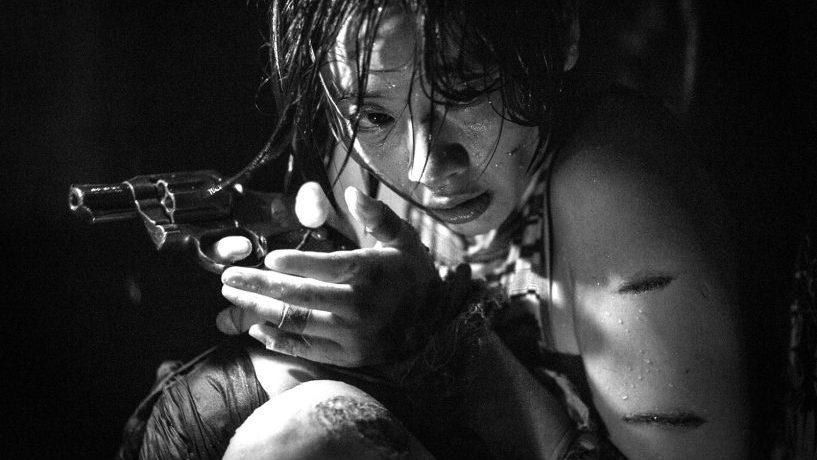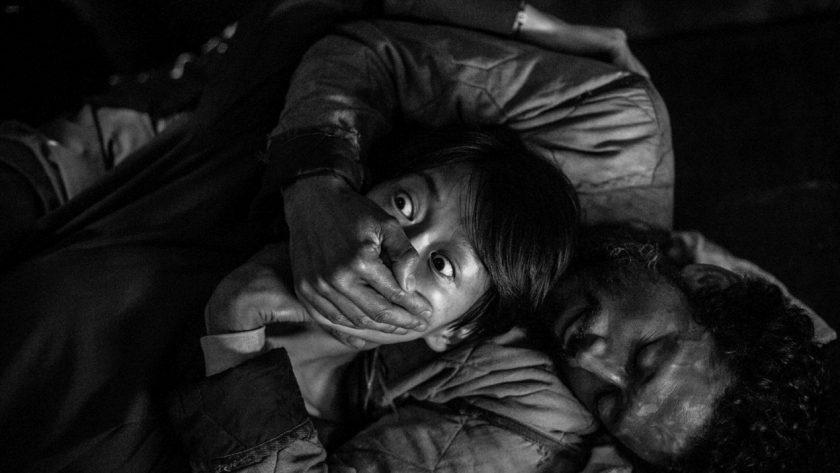LEAFF 2021 celebrates its sixth year with a programme of thirty films from celebrated and debut filmmakers. Championing East Asian cinema, LEAFF aims to bring a wide range of cinema to London and offer the opportunity to experience a new culture of cinema.
Aryan Tauqeer reviews the action-thriller adaptation of the novel Wisdom Tooth by Chinese novelist Lei Mi.
On what it means to be garbage.
The city, as a network of people, is a structural contrast to any other biome, in that the exchange of commodities and connections serves to create further entanglements, rather than simplify processes. The jungle, of course, is defined by its environment rather than its occupants. In the grand scheme of social change, though, the city is a far less orderly “civilised” system than it is presupposed to be by its occupants. Like any environment, there are enforcers of a system, and there are those who live outside of it, unable to fit into the system. Soi Cheang’s Limbo (2020), then, suggests that the jungle-like nature of the city manifests itself in the form of nigh-animalistic conflict between these classes of people.
Situating itself within the context of Hong Kong as a microcosm of class conflict, Limbo is functionally an old-school cop drama, right down to the comic tension between the two detectives who roam through the streets to hunt down the cannibalistic killer that hangs over the city like an especially persistent cloud. In enclosed spaces, the camera constantly flits between anxious eyes, the clock ticking, and hastily pinned images that encapsulate the worst humanity has to offer. There’s nary a calm moment, frantic energy building, only released during the equally panicked moments of violence. In the streets of Hong Kong, though, the camera engages in observation, rather than targeting its characters. It would be amiss to call Cheang’s directorial style documentarian, but in the brief moments of calm throughout the film, that is what it most closely resembles — a portrait of a living, breathing city, captured in black and white.

At the same time though, there is nothing harmonious about cities, especially when they are fundamentally built on the assumption of segregation, which is something Cheang pinpoints by highlighting the extreme power imbalance between our two detectives and the impoverished denizens of the city they encounter every day. These montages of motion — hands moving towards holsters, eyes darting to the side, grins twisting into snarls — are one of the many editing techniques utilized to heighten the stakes of every interaction between cops and citizens, even with the power imbalance intact.
When something finally snaps and the boundaries separating these roles collapse, though, is where Cheang’s directorial fingerprint is most clearly evident. As with his 2015 film, Kill Zone 2, the action in Limbo is defined by an escalation in kinetics, where both the innocent and the guilty are shot barreling through the urban vegetation that litters the streets of Hong Kong. By weaving in motive for our more incendiary Detective Cham (played by Gordon Lam) to make use of particularly nasty techniques to find the truth, Limbo borders on reinforcing the rather fascistic notion that there are “good” cops who are worn down by witnessing years of brutality. What prevents the film from crossing into replaying tired tropes, however, is the atmosphere of palpable fear created whenever a chase ensues. There’s fundamentally no difference between a killer and a cop hunting down someone vulnerable enough to be harmed by either, and Cheang understands this, steeping both detectives in so much moral muck that their surroundings are almost pristine in comparison.

On a formal level, Cheang’s status as one of the legendary Johnnie To’s most accomplished protégés is evident in the spatial construction of Limbo. One scene in particular, featuring a street gang, our detectives and a young girl, evokes To’s Exiled (2006) in the manner in which individuals’ occupation of a room is disrupted by movement. The slow-motion sequences that ensue are tableaux for the aforementioned power dynamics to manifest themselves, almost acting as dioramas of the wider power imbalance that plagues policing. Whilst gender dynamics are not at the forefront of Cheang’s thematic concerns here, it is telling that both the perpetrator and victim of the crime that drives Detective Cham to the brink of his sanity are women; the exploitation of women at all levels of the class hierarchy is another stain that Cheang weaves into the fabric of his filthy tapestry. Even when these characters are alone, the city itself acts as a character: a monstrous, massive wave of muck that threatens to entrap all within its path. Virtually every place our temperamental detective duo traipses through acts as an opportunity for the script to demonstrate the unscrupulous nature of this duo, with snide remarks comparing the garbage that surrounds them with the criminal underworld that they are working to take down — or so they claim. In spite of its world-weariness, though, Limbo is not without empathy for its characters. The crane shots, in particular, reduce the scale of the often gruesome events happening until those running for their lives appear merely as insects, insignificant in the grand scheme of things.
Beneath the surface of purpose that would seem to define the urban metropolis, there are the unwanted, rendered irrelevant by the instruments of the state (particularly with regards to how many of the “criminals” hunted down by the protagonists are immigrants who entered Hong Kong illegally) until they blend in with the trash that flows out of the wealthy and into the veins of the impoverished. This is the sharp political thesis of Cheang’s latest film, making a hardboiled detective thriller much more than just a feat of formal experimentation.
Limbo is out right now:




